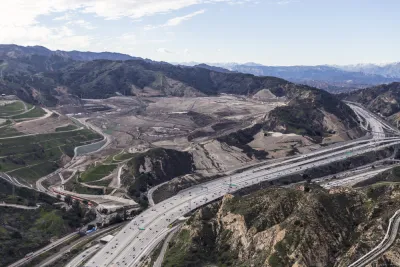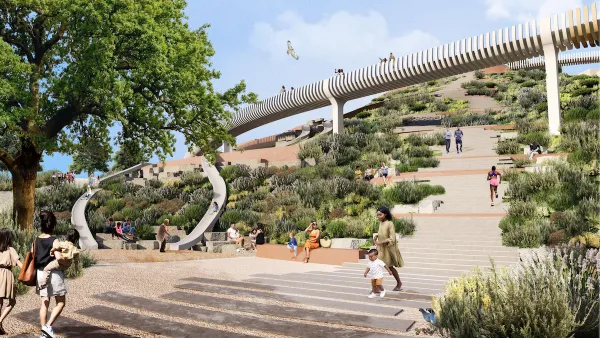The restoration of degraded lands, including properties occupied by abandoned, redundant, or unwanted infrastructure, is of great importance in Los Angeles County, where numerous underserved communities are plagued with environmental burdens.

Degraded lands are often found in areas that have the most environmental burdens with respect to groundwater threat, hazardous waste, poor air quality, pollution burden, etc. These lands include properties occupied by abandoned, redundant, or unwanted infrastructure, such as decommissioned landfills, oil wells, rail yards, utility corridors, airports, and power plants. In Los Angeles County, many of the most environmentally burdened communities are also the most park poor per the Countywide Parks Needs Assessment and the most climate-vulnerable per the County Climate Vulnerability Assessment.
In locations where environmental burdens are concentrated and impactful land uses are defunct, multiple benefits can be derived from restoration projects like new parks that address residual pollution and unhealthy conditions, restore natural systems, and provide enhanced recreational opportunities for residents. In this article, park planner Clement Lau makes the case for a reimagined conservation and restoration approach that prioritizes and focuses funding and other resources to acquire, clean up, and reclaim degraded lands for park use in the communities that have the most environmental burdens.

National Parks Layoffs Will Cause Communities to Lose Billions
Thousands of essential park workers were laid off this week, just before the busy spring break season.

Retro-silient?: America’s First “Eco-burb,” The Woodlands Turns 50
A master-planned community north of Houston offers lessons on green infrastructure and resilient design, but falls short of its founder’s lofty affordability and walkability goals.

Delivering for America Plan Will Downgrade Mail Service in at Least 49.5 Percent of Zip Codes
Republican and Democrat lawmakers criticize the plan for its disproportionate negative impact on rural communities.

Test News Post 1
This is a summary

Test News Headline 46
Test for the image on the front page.

Balancing Bombs and Butterflies: How the National Guard Protects a Rare Species
The National Guard at Fort Indiantown Gap uses GIS technology and land management strategies to balance military training with conservation efforts, ensuring the survival of the rare eastern regal fritillary butterfly.
Urban Design for Planners 1: Software Tools
This six-course series explores essential urban design concepts using open source software and equips planners with the tools they need to participate fully in the urban design process.
Planning for Universal Design
Learn the tools for implementing Universal Design in planning regulations.
EMC Planning Group, Inc.
Planetizen
Planetizen
Mpact (formerly Rail~Volution)
Great Falls Development Authority, Inc.
HUDs Office of Policy Development and Research
NYU Wagner Graduate School of Public Service





























